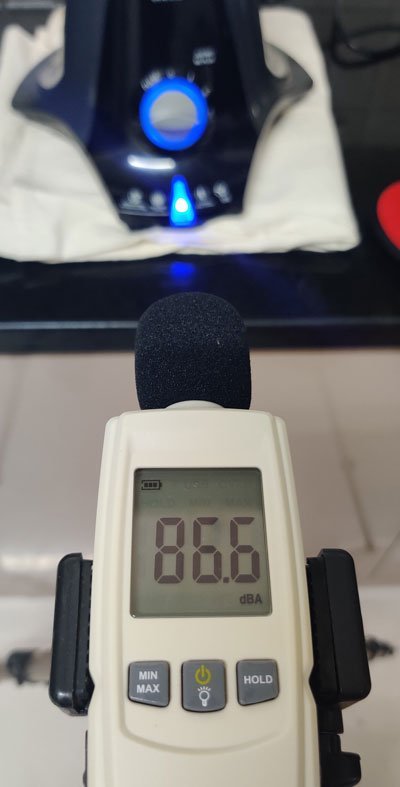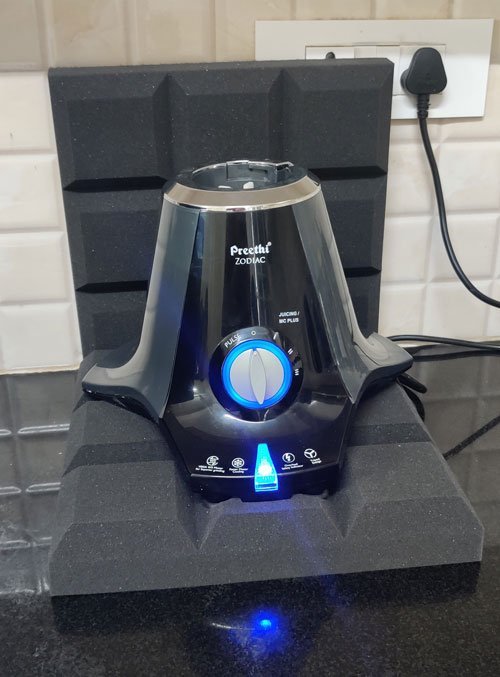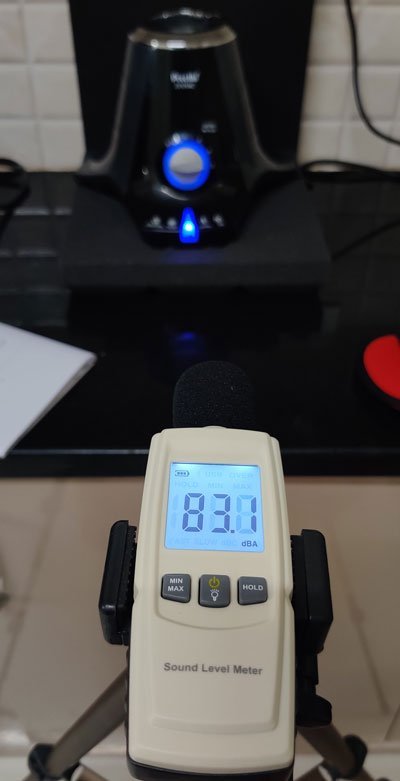As a kitchen equipment reviewer, I spend a lot of time going through user reviews on Amazon and comments on YouTube reviews. So when I was going through them for our mixer grinder series, I was able to find something common across all platforms.-desperate consumers looking for a silent mixer grinder.
Unfortunately, we don’t have such an option in India. Even models advertised as silent make a noise of at least 80-95dB or more, which is more than enough to wake your kids as well as those next door.
In a bid to find a silent mixer grinder, I virtually travelled across the oceans and reached the US- the land of the coveted Vitamix blenders.
For the uninitiated, Vitamix blenders are considered THE best by almost all product reviewers in western countries.
They have a particular model- The Quiet One, which is less noisy than most other options available in the market. But its silence is not owing to any special technology or design of the blender. But because they have kept it in an enclosure.
Delving further, I was even able to find a business solely focussed on making such enclosures for blenders- Whisper Blend. After all, noisy blenders are a problem not just for homes, but more so for commercial establishments like juice bars and restaurants.
But such enclosures are way too expensive. They cost around $200 ( Rs.16000)a piece. That is more than double what you spend on a high-quality mixer grinder in India. Moreover, I highly doubt if it will suit most mixer grinders in India, as we have to hold its lid while grinding.
Being a true blue Indian, I thought if any jugaad would help reduce the mixer grinder’s noise.
We consulted a mechanical engineer turned sound engineer, Sujith Valiyaveettil to understand more about the nuances of reducing mixer grinder noises.
According to him, you should never keep mixer grinders in the corners because the vibrations and noise would intensify. Instead, he suggested keeping it towards the centre of the countertop. He also suggested using acoustic foam to reduce the noise levels.
The Test
We had shortlisted 3 methods to reduce mixer grinder noise. To test them, we ran the Preethi Zodiac Mixer Grinder without jar on the 3rd speed. Then measured the sound by keeping the decibel meter 2 feet in front of the motor housing.
Note that the sound is expressed using logarithmic decibels. An increase of 10 dB is perceived as around double in terms of loudness. So, if we are able to decrease the sound by 10dB, we can consider it a win as the loudness would have halved.
Method 1: Keeping it away from the wall

When you keep the mixer grinder adjacent to the walls, the sound waves bounce off the surface and amplify. When we measured the noise level, we found that the mixer grinder made around 90 dB noise when it was kept close to the wall.
But, when we kept it at the centre of the kitchen countertop, approximately 25 cm away from the wall, we measured the noise to be around 88 dB.

This method does work. But, does it make a significant difference? Not really!
Related reading: How To Maintain Mixer Grinder As Good As New
Method 2: Placing mixer grinder on a thick mat
When you place the mixer grinder on a thick mat, it absorbs some of the noise and thus helps reduce the overall loudness. We kept it on a thick cotton mat, about a foot away from the wall, and measured the noise level. It came to around 86-87dB.

Again, it did not prove to make a significant difference.
Finally, the method we thought would work the best- using acoustic foam.
Method 3: Using Acoustic Foam
Sujith warned us to exercise caution while using acoustic foam to reduce mixer grinder noise.
You should never block the ventilation underneath the motor housing of the mixer grinder. The motor could heat up, triggering the overload protection switch or even worse, damaging the motor itself. So we need to ensure the foam is sturdy.

Many of the acoustic foams available in the market have triangular spikes. So it’s almost impossible to keep the mixer grinder housing on them. Instead, you need to choose flatter options on which you can place the motor housing comfortably. And you need to place it carefully on the foam so that it doesn’t sink deep and block the ventilation holes.
Finally, noise bouncing off the wall adjacent to the mixer grinder still remained a problem. So, we kept an acoustic foam piece on the wall too. We recorded the decibel levels with and without the foam on the wall.

When you keep the foam just underneath the housing, we saw the noise level reduced to about 85 dB. Along with it, we kept a foam piece on the wall too, and the noise level went down a bit more to 83 dB.

Among the methods we tested, the acoustic foam was the most effective. But was it enough? Not really.
The noise level outside the kitchen was about 79-80dB when the mixer grinder housing was kept on the acoustic foam. Without the acoustic foam, it measured 83-84 dB.
Our teammates who tagged along while testing the noise level were of the opinion that they did not find a significant difference that would push them to adopt acoustic foam in their kitchens.
Conclusion
Overall, we have to conclude that the best practical way to reduce noise level of mixer grinders is using acoustic foam. They reduce the noise by around 7-8 dB, which is significant. However, they may not necessarily be practical on a day-to-day basis.
Sound enclosure boxes would have a much better effect. But, considering that we have to hold the lid while grinding, adjust the speed settings and scrape down the ingredients in the jar in between, a sound enclosure box might not be a practical solution either.
Other methods you could try are applying acoustic foam to the kitchen door and closing the kitchen door when running the mixer grinder.
Yet another option would be getting a less noisy mixer grinder. Out of the options we tested, we found Sujata Dynamix and Prestige Delight Plus to be better in that aspect. Otherwise, even options like Philips Silent did not prove to be silent enough.
